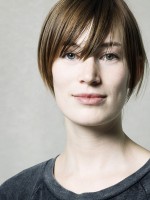European Fashion Award – FASH 2011 / 2. May 2010
Attention please!?
“Look – at – me!” Celebrities seek attention at almost any price by flaunting their blingbling. At the same time the Yellow Press’ “Selling over Stars” engendered a quota-oriented style dictatorship. It is very clear: glamour is in fashion.
In the old days anyone who wanted to be taken seriously acted reserved and respectable. These days the “Economy of Attention” increasingly dominates the fashion image. Charisma turned into commerce. Everything screams: buy me! The questions remain: What is beautiful? What makes people look god? What is the impact of fashion today? Is it about identity or status? Is it about sales, attention, or beauty? Are there any dreams and visions left? Does elegant simplicity or quiet grandeur have any significance? Can beauty provide comfort? The European Fashion Award – FASH 2011 is looking for answers to these questions under the title “Attention Please!?”.
Briefing
Phase 1: Analysis
The first phase of the entry encompasses an independent analysis of today’s relationship with fashion. This means the student’s own point of view – whether in the streets or in the closet at home. The analysis results shall be documented and supplemented by the student’s own photographs. Media such as blogs or fashion magazines are not permissible.
Only in the second step will the student further corroborate his or her analysis by researching the appropriate publications such as market studies, books, articles or essays. In addition, the student shall define ‘fashion’ in his or her own words.
Part 2: Concept
The concept on the topic “Attention Please!?” is to be based on the analysis. The jury is looking for independent and consistent designs. They can be close to current market trends, yet should offer more than just a representation of the latest trends. To accomplish this, the student needs to reflect social and economic, as well as cultural and political processes.
Phase 3: Design
Based on this established concept the third phase of the competition includes the conversion of the results into a collection with a minimum of five outfits. Two complete outfits need to be submitted to the jury evaluation. The student may freely choose the segment (e.g. business, leisure or athletic apparel). Accompanying accessories are permitted. The participant may also select between womenswear, menswear, or complete collections, depending on the results of his/her analysis. There is no restriction as to seasonal apparel.
Winners Euroepan Fashion Award – FASH 2011
Category Students
1st Prize
Stephanie Höcker
2nd Prize
Ioana Ciolacu Miron
2nd Prize
Nina Kanitz
3rd Prize
Natalia Politowa and Marcella Sewella
Category Graduates
1st Prize
Annika Tutsch
2nd Prize
Alexandra Fenkner
3rd Prize
Julia Müller and Marcel Lunkwitz
Members of the 2011 Jury
Torsten Hochstetter, Creative Director O’Neill, Amsterdam
Marion Feldmann, Divison Head Womens Fashion, Otto, Hamburg
Ivonne Fehn, Fashion Director Süddeutsche Zeitung Magazine, Munich
Marcel Herrig, Unicut Design Office, Shenzen/China
Joachim Schirrmacher, Büro für strategische Kommunikation, Hamburg/Berlin
Dorothee Schumacher, Owner and Designer Schumacher, Mannheim
FASH 2011 / 2. May 2010
Briefing
Phase 1: Analysis
The first phase of the entry encompasses an independent analysis of today’s relationship with fashion. This means the student’s own point of view – whether in the streets or in the closet at home. The analysis results shall be documented and supplemented by the student’s own photographs. Media such as blogs or fashion magazines are not permissible. Only in the second step will the student further corroborate his or her analysis by researching the appropriate publications such as market studies, books, articles or essays. In addition, the student shall define ‘fashion’ in his or her own words.
Part 2: Concept
The concept on the topic “Attention Please!?” is to be based on the analysis. The jury is looking for independent and consistent designs. They can be close to current market trends, yet should offer more than just a representation of the latest trends. To accomplish this, the student needs to reflect social and economic, as well as cultural and political processes.
Phase 3: Design
Based on this established concept the third phase of the competition includes the conversion of the results into a collection with a minimum of five outfits. Two complete outfits need to be submitted to the jury evaluation. The student may freely choose the segment (e.g. business, leisure or athletic apparel). Accompanying accessories are permitted. The participant may also select between womenswear, menswear, or complete collections, depending on the results of his/her analysis. There is no restriction as to seasonal apparel.

 Annika Tutsch
Annika Tutsch Lihi Mendel
Lihi Mendel Hannah Kliewer
Hannah Kliewer